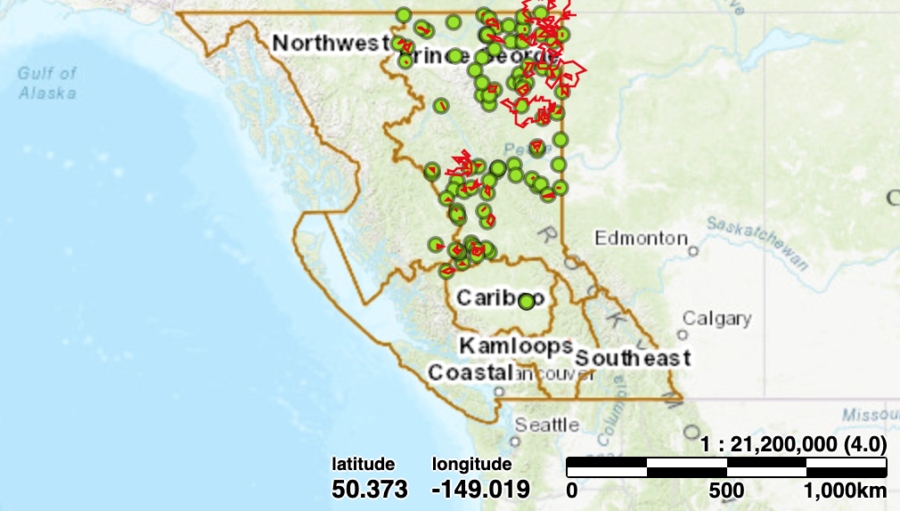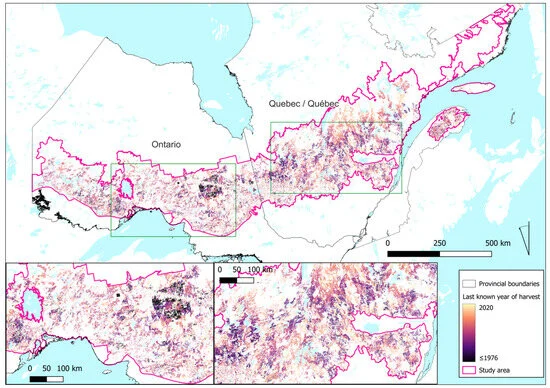It’s been four years since a near-perfect storm hit the U.S. West. COVID-19 was officially declared a pandemic by the World Health Organization in March 2020, just months before the worst wildfire season in recorded history.
The interactions between wildfire and COVID-19 were large and sweeping, research in the years since has shown. The 2020 season left lasting impacts on the wildland firefighting force, both systemically and personally.
Wildland firefighters are at high risk for both COVID-19 infection and, when infected, experiencing severe illness from the virus, research published in the National Library of Medicine and Science academic journals found. Researchers in one study examined potential health and workforce capacity impacts by modeling the movement of suppression resources across the country over a season and the corresponding potential for disease spread and cascading outbreaks across wildfire incidents.

The increased risk stems primarily from firefighters’ exposure to wildfire smoke, limited access to hygiene supplies, and constantly being physically near other wildland firefighters and the public.
IHC superintendents were surveyed by USFS researchers a year after the fires burned. At the beginning of the pandemic, the agency launched a wide range of new practices for hotshot crews to limit the spread of COVID-19 while also, it was hoped, improving operational efficiency. New practices included changes in pre-fire preparation, using virtual paperwork and briefings, and reformatting traditional fire camps to a more widespread layout. The USFS also created a COVID-19 Incident Risk Assessment Tool for fire managers; it measured numerous factors including camp size, mitigation techniques, and number of positive cases to estimate how at-risk each crew was.
The researchers wanted to know if superintendents were interested in maintaining any of those practices in daily hotshot crew use in the years after 2020, regardless of COVID-19. The survey found that the majority of practices contributed positively to operational efficiency in addition to crewmember safety and well-being. Most respondents preferred the ease of virtual vs. in-person paperwork and briefings, they liked having crews spike on or near the line with the full-scale ICP camp away from the fire, and they felt better physically and mentally as a result of these changes.
Wildland firefighter well-being — and proper pay — are still a major focus for the USFS post-2020 as retention becomes an increasingly worrying issue. Research conducted this year on retention found that highly skilled wildland firefighters with a high number of assigned days, payment of additional annual earnings, and gained experience throughout the firefighter’s career all had positive effects on retention. Local wages of alternative occupations in a firefighter’s local area had no significant effect on retention.
The future of wildland firefighter physical health may also see improvements thanks to technological developments stemming from COVID-19. Respiratory illnesses like coronavirus, and other long-term health risks firefighters face such as lung cancer and cardiovascular disease, may be seen in firefighters less and less as mobile respirators proceed further in development.
California fitted wildland firefighters with a mobile respirator prototype last October while they dug firelines or cut down trees with chainsaws. The results were mixed.
“Plenty broke. Hoses popped out of sockets. Straps snapped. Masks slid down sweating faces. Filters became dislodged,” Julie Johnson wrote for the San Francisco Chronicle.
During this event, firefighters from Cal Fire, L.A. County and the USFS took turns trying out several types of mask. They hiked down a slope and then back up, then pulled off their masks, sweating and breathing hard in triple-digit temps. Each round took only about ten minutes.
Firefighters shared their impressions with observers: Felt like a muzzle. Was too bulky. Too tight. It slipped off my face once I began to sweat.
Hearing one of her colleagues say “it’s better than nothing,” Cal Fire’s Sol Espinoza spoke up. “I’d rather take nothing,” she said.
The test is one of many completed or planned throughout the country as the fire agencies look to lower firefighter mortality from diseases increasingly found to be worsened through wildfire smoke inhalation. Experts have hedged their bets on technology frequently used to keep COVID-19 patients hospitalized with severe cases alive. Adaptations in the technology are still under development as researchers figure out which version might be best suited to meet the dynamic needs of firefighters in the field.











